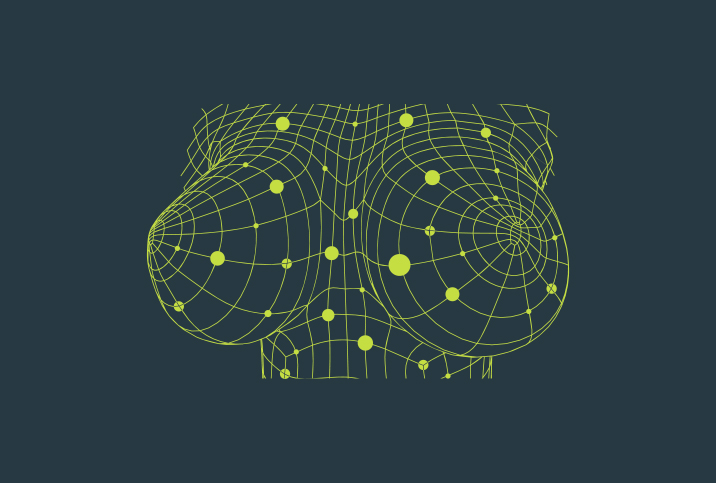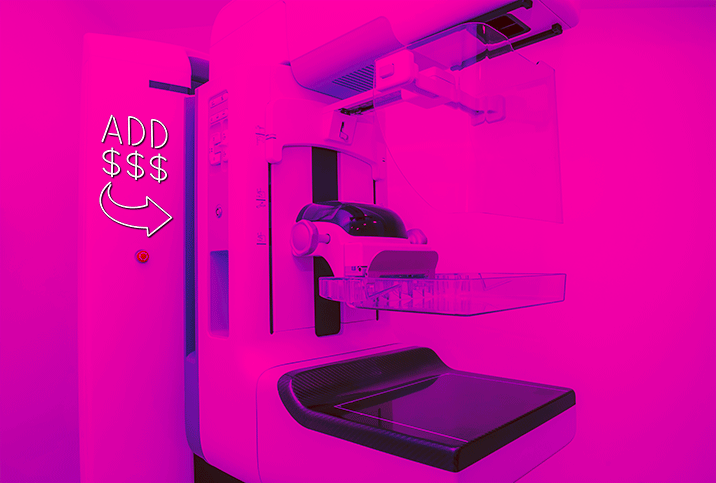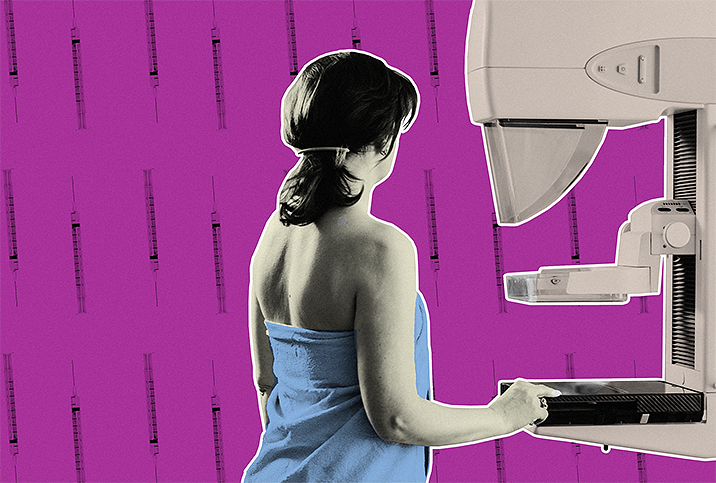This Ain't Your Mama's Mammogram

Adults are inundated with a variety of tips for better health: eat right, exercise regularly, drink water, manage stress—plus be sure to get all those regular health screenings recommended by medical professionals depending on your age.
For women who are age 40 or older with an average risk for breast cancer, your list should include regular mammograms. You've undoubtedly heard all about mammograms from an older relative, but the latest technology is quite different than it was even just a few years ago. This means higher-quality images, better detection and increased rate of survival if breast cancer is discovered.
What is a mammogram?
A mammogram is a low-dose X-ray of the breast used to detect changes in the tissue that may indicate cancer. The traditional 2D technology takes X-rays from two angles: the side of the breast and above.
A specialized X-ray machine compresses the breast for better imaging. Women typically stand at the machine, and the technician positions their breasts, one at a time, for the mammogram. The machine captures about four images per screening, and these are read by a radiologist, a doctor trained in the study of images used to diagnose disease.
Mammograms can often detect lumps and thickenings before they can be felt during a self-exam. Early detection of cancer offers patients more options for treatment and better outcomes, including improved survival rates and, in some cases, complete cures.
New technology that is now available provides 3D images for clearer diagnostics, which can mean even earlier detection and better outcomes.
How does a 3D mammogram work?
The 3D mammogram works by taking hundreds of images of the breast from both above and the side, according to Christoph Lee, M.D., a board-certified radiologist with Seattle Cancer Care Alliance. It uses high-powered computing to convert the images into a stack of layers or "slices" that are only 1 millimeter thick.
"The procedure itself is similar to the 2D mammogram," Lee said during an interview. "Women can expect to have their breast positioned on a platform, and the breast is compressed under a paddle. Then an X-ray arm sweeps over the breast to take multiple images."
According to Lee, the Seattle Cancer Care Alliance offers 3D mammograms, rather than 2D, to all of their patients because this technology enables doctors to see a clearer picture of the breast and provides a more confident assessment.
What are the advantages of the 3D mammogram?
"Because 3D mammograms offer more images and clarity, they enable doctors to detect disease sooner and therefore improve prognosis," Lee explained. "Further, because of the clarity of the images, it reduces the chances that women undergo follow-up tests of tissue that is normal but could seem abnormal on a 2D image."
In addition, several studies have shown 3D mammography can be helpful for some women with dense breast tissue. A large study published on the JAMA Network in July 2020 assessed more than 1.5 million screenings performed at 46 U.S. healthcare facilities. Researchers found 3D mammography provided better cancer detection rates for initial screening exams and subsequent exams for women ages 40 to 79 years with heterogeneously dense breasts and for women ages 50 to 79 years with scattered fibroglandular density. However, for women with extremely dense breasts, 2D versus 3D mammography provided similar results.
'This technology enables doctors to see a clearer picture of the breast and provides a more confident assessment.'
The Affordable Care Act requires insurance companies to cover the cost of 2D mammograms every two years for women 50 and older, and as recommended by a doctor for women ages 40 to 49 and women at higher risk—with no out-of-pocket payments from patients.
Most insurance providers, including Medicare and Medicaid, also cover 3D mammograms, but if you're unsure of your coverage, call your insurance company to confirm.
"However, women should check with their insurance provider on whether or not their plan covers diagnostic 3D mammograms for abnormal screening findings or workups for clinical signs and symptoms," Lee advised.
He continued, "Regardless of the type, what is most important is that women are screened regularly with either 2D or 3D mammography."


















